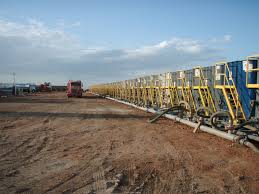Transportation Decarbonization: Medium & Heavy Duty Vehicles

As we have been discussing, the US National Blueprint for Transportation Decarbonization breaks the Transportation sector into seven categories, each of which has its own targets for emission reduction/elimination, and strategies for how those declines in emissions will be achieved. The second segment by emission % is Medium- and Heavy-Duty Vehicles.
For the purposes of the Decarbonization Blueprint, “Medium and Heavy Duty On-Road Trucks and Buses” includes everything from heavy-duty pickup trucks to long haul semi’s (and everything in between). MHDV make up approximately 5% of vehicles, but they are responsible for 21% of transportation emissions. A further 50% of those emissions are from heavy duty trucks that make up about 10% of the total MHDV category. So when we are talking about this category’s emissions, most of the effective action that can be taken should be focused on a small segment of the total. The other simultaneous focus for MHDV category is the social and environmental justice issue. Where the emissions from light duty vehicles are more ubiquitous, the emissions from MHDV are often concentrated in major urban areas and along disadvantaged corridors within the country.
In terms of the numbers, 81% of the MHDV segment is diesel powered, and unlike light duty vehicles, there is not really a clear ability to easily pivot to EV or hydrogen options (outside of potentially in some of the lighter vehicles that run smaller ranges without heavy freight – like postal trucks). So the suite of zero emission options for the MHDV segment will necessarily be more varied than LDV or other segments where there is less variation in use and function for the vehicles in question. That means a LOT of research & development. Additionally, turnover and replacement timelines for heavy duty vehicles are substantially longer than those for light vehicles, so all the proposed new changes would end up slow rolling out on newer vehicles over time. This is where renewable diesel options will likely become a key factor in pushing MHDV toward hitting emissions goals.
In November of 2022, the US joined the “Global Memorandum of Understanding on Zero Emission Medium- and Heavy-Duty Vehicles” introduced at COP26 which agrees that we will be on a path to 100% new zero-emission MHDV by 2040 at the latest, with a target of 30% by 2030. In January 2023, the EPA announced their “Final Rule and Related Materials for Control of Air Pollution from New Motor Vehicles: Heavy Duty Engine and Vehicle Standards” that sets new emission standards for HD vehicles in line with the Decarbonization plan (you can read that EPA rule here: Control of Air Pollution From New Motor Vehicles: Heavy-Duty Engine and Vehicle Standards )
All of this to say that despite the lack of current technology with which to make the changes required to hit emissions targets, it appears all the rules and regulations coming out across Federal Agencies are intending to follow through on the goals set. This portion of the policy obviously carries serious implications for trucking and transportation companies across the board in terms of their equipment purchasing, maintenance of current options, etc. This is definitely a portion of the plan that is still very much unsettled in terms of immediate and longer range impacts. We will keep a close eye on developments and continue to keep you informed of major changes that impact the industry.


